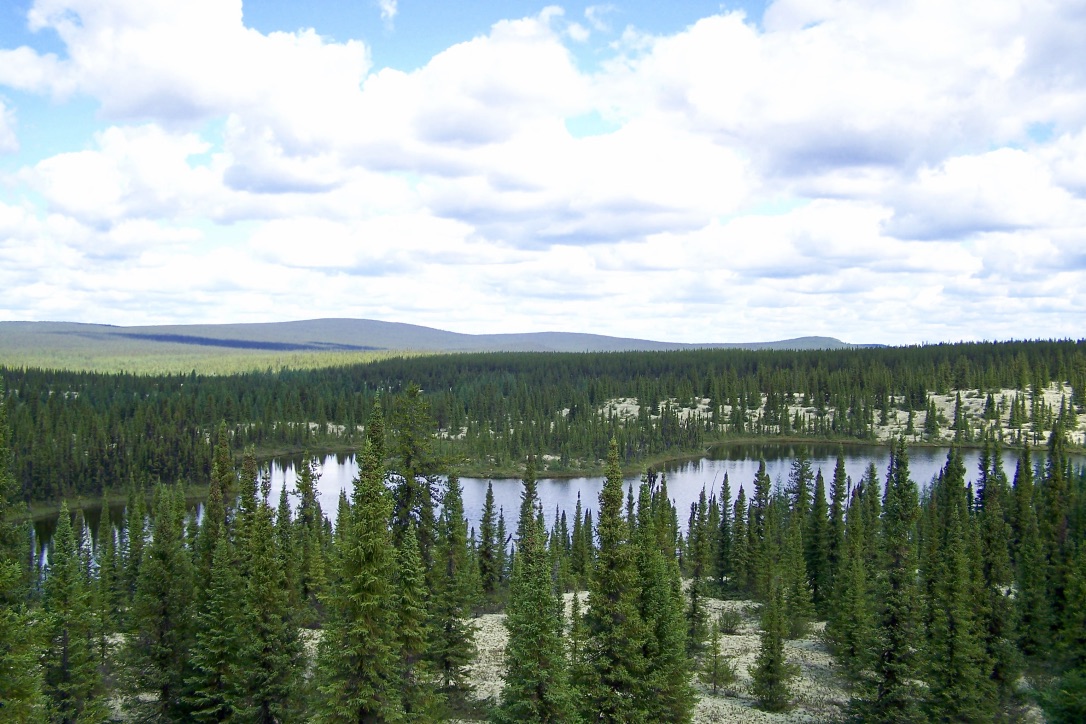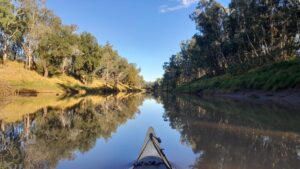As the second largest country in the world, Canada is one of the few places where you can canoe for a month or even two months at a time along a single route. Long-distance wilderness canoeists target two main areas. The Barren Grounds of the Northwest Territories features such classic whitewater rivers as the Back, Thelon, Dubawnt and Kazan, plus countless routes linking lakes and watersheds through enterprising portages.
The second canoe paradise, Labrador and northern Quebec, is only slightly less well-known. It has always drawn canoeists from the population-rich provinces of Ontario and Quebec, especially the frugal ones who don’t want to spend thousands of dollars chartering an aircraft to their roadless put-in. Since the 1960s, this region is serviced by an old mining train that accepts passengers and canoes and will stop to drop you off wherever you want. The train, which ends at an old, mostly abandoned iron ore town called Schefferville, brings canoeists deep into the heart of wilderness canoe country.
Last year, two notable canoe expeditions traversed Labrador and northern Quebec: Justin Barbour took a southerly line and did 1,000km of his 1,700km route before getting wintered out. And a party of six young Quebec canoeists executed a flawless 1,500km journey along a northerly trajectory.
Next week, elementary school teacher and canoeist Dave Greene, 34, becomes the latest to follow this Labrador tradition. He and partners Noah Booth, Alex Traynor and Chris Giard will canoe 840km, following four rivers and two heights of land for an estimated 35 days.

Black spruce dominates Labrador’s boreal forest. Open areas of caribou moss, ideal for camping and portaging, show in light green. Photo: Dave Greene
This is Greene’s seventh long canoe expedition and his second in Labrador. Unlike his first bold trip from Georgian Bay to Quebec City by rowboat and bicycle in 2011 (87 days, 3,000km), this current adventure was inspired by a childhood dream and a favourite book, The Lure of Far Away Places, by the late Ontario canoeist Herb Pohl. Stories of the Labrador wilderness always fascinated him, and its accessibility made it even more attractive as he got older. Canoeing, he says, “is iconic to the Canadian identity.”
Pohl’s book discusses the route that Greene will follow from approximately July 15 to August 21. “I’ve read and reread it…more times than any other book I own. I have spent years dreaming about following a route similar to what Herb did.” Herb Pohl paddled Labrador more than any other modern canoeist and died in 2007 at the age of 76 pretty much as he lived, drowning while canoeing on the north shore of Lake Superior.

Labrador’s rocky coast, including a few distant icebergs. Photo: Dave Greene
Because of the scarcity of roads, getting to northern Labrador is a mini-expedition of its own. Greene and his team will drive north from Halifax to Labrador City, where they will take that great wilderness train, operated by Tshiuetin Rail. The train is from another era, and so is the fare — $28 round-trip.
They will disembark at Menihek, a whistle stop just south of the train’s terminus at Schefferville and a common put-in. From here, Greene will paddle glacially carved lakes to the De Pas River, then down the George River and overland to Whitegull Lake. He and his friends will eventually reach Mistastin Lake.
Mistastin is a crater lake 16km in diameter that Herb Pohl paddled in 2001 at the age of 70. Although Pohl was almost exclusively a solo paddler, on this occasion another veteran Ontario canoeist, Pat Lewtas, joined him. Together, they paddled its outlet river until it joins the mighty Kogaluk River, which flows into the Labrador Sea, 55 kilometres south of Nain. Both fell in love with the gorges, canyons and falls along the route. Long intrigued by their descriptions, Greene will see it for himself.

Expedition route from Labrador City to Nain, including the wilderness train section. Photo: Dave Greene
Their equipment includes two Esquif canoes, a reflector oven, fishing gear and more. Pat Lewtas, now a philosophy professor, has provided information on the area based on his previous expedition with Pohl. You can track down dozens of accounts of Canadian wilderness canoe expeditions, including Herb Pohl’s, in the digital archives of the Nastawgan, a wilderness canoe journal. The quarterly is free to access (except the last couple of years) and dates back to 1974.

Greene and company. Photo: Dave Greene






